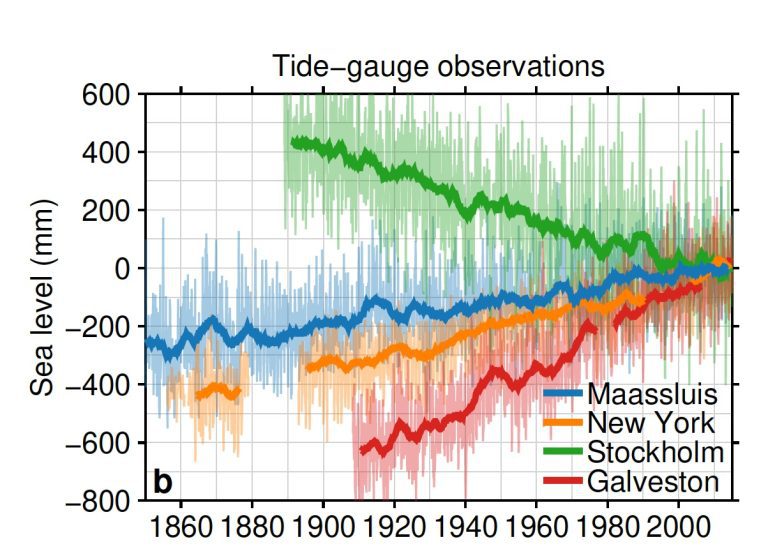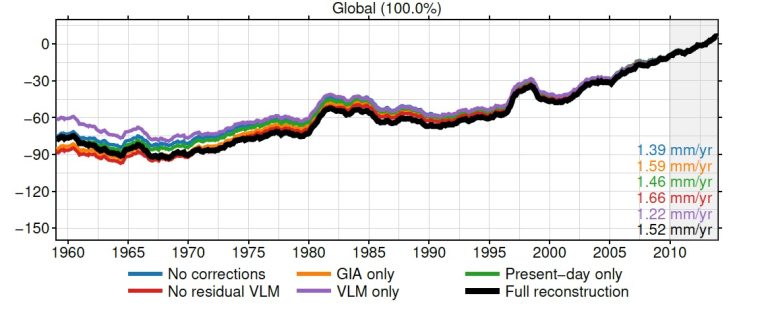The good news about sea level rise is that we are now getting the numbers right, said Dr Thomas Frederikse at his PhD defence. The bad news is that we are now also sure that sea level rise is accelerating.
Wet feet on the San Marco square in Venice will become more common. (Photo: pxhere)
The Netherlands, perhaps due to its vulnerability to the sea and its high degree of organisation, has the longest records of tide gauges in the world. The oldest known written sea level record is the one from Amsterdam, dating from 1700 to 1924.
 Different tide gaudes from last century (Graph from thesis)
Different tide gaudes from last century (Graph from thesis)The strange thing is that tide gauge observations differ from place to place. Historical records show that over the last century, the sea level in Rotterdam has risen by about 15 centimetres, in New York by 30 cm. Galveston Texas has seen an rise of 60 cm, while in Stockholm the water level dropped by 40 cm. So how can we speak of global sea level rise and how much is it?
Physicist Dr Thomas Frederikse, who graduated cum laude on his PhD research with Professor Roland Klees and Dr Riccardo Riva from the CEG Faculty, sees himself as a water accountant. He tries to balance the books between extra water streaming into the oceans, the thermal expansion of the sea water (30% of the volume-change), and the resulting water level rise. The main contributions come from glaciers, melting land ice on Greenland and Antarctica, and the decrease of water storage on land.
Other factors influencing the sea level are the rebound of the earth’s crust after the last ice age (that explains the water level drop in Scandinavia), the distribution of water over the globe under the influence of (varying) gravity and the Earth’s deformation.
 Reconstruction of global sea leven rise. (Graph from thesis)
Reconstruction of global sea leven rise. (Graph from thesis)Taking everything into account, Frederikse observes a global sea level rise of 1.5 mm/year since 1958 and an acceleration of 0.07 mm/year2. The more recent sea level rise, since 1993, is 3 mm/year. These observations are in line with the total of sources like glaciers and land ice loss over the same period.,
But what does the global sea level rise mean for the Dutch dike builders? Due to gravitation effects, water from Greenland hardly adds to the sea level in the North Sea, but water from melting land ice on Antarctica does spread to Dutch shores.
Currently, the Dutch Delta Commission reckons on a 1.15 metre sea level rise by the end of the century. But researchers have warned that the instability of the Antarctic Ice Sheet may contribute to a global sea level rise of over 2 metres by the year 2100.
Frederikse looks beyond Dutch shores, as he says in one of his propositions: ‘Sea level rise is mostly caused by rich people, while poor people will be hit hardest. This makes it imperative for us to take sufficient measures to prevent further climate change.’
- Thomas Frederikse, Sea-level changes on multiple spatial scales: estimates and contributing processes, PhD supervisors Professor Roland Klees and Dr Riccardo Riva, 19 March 2018. Thesis available in TU Delft repository.
Do you have a question or comment about this article?
j.w.wassink@tudelft.nl


Comments are closed.